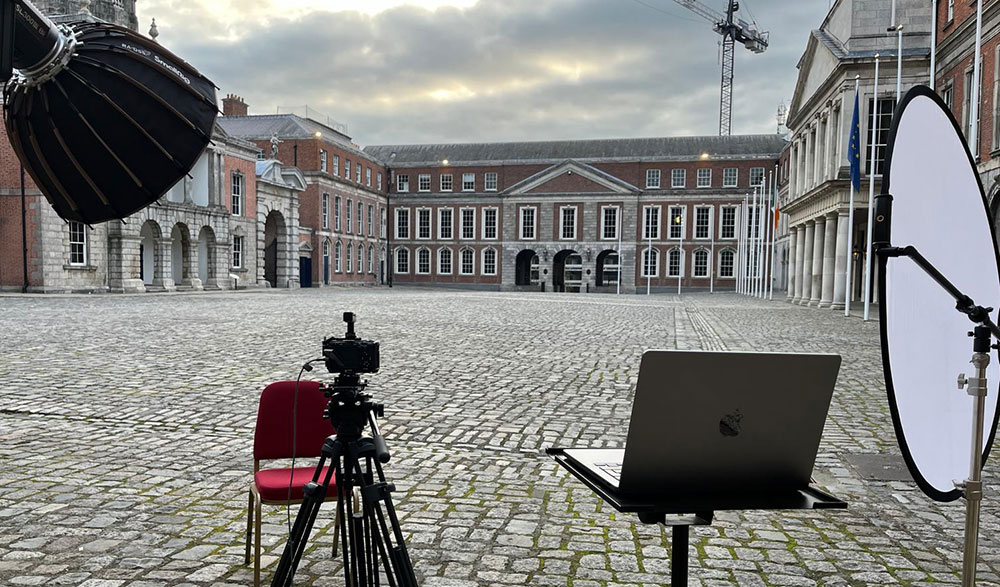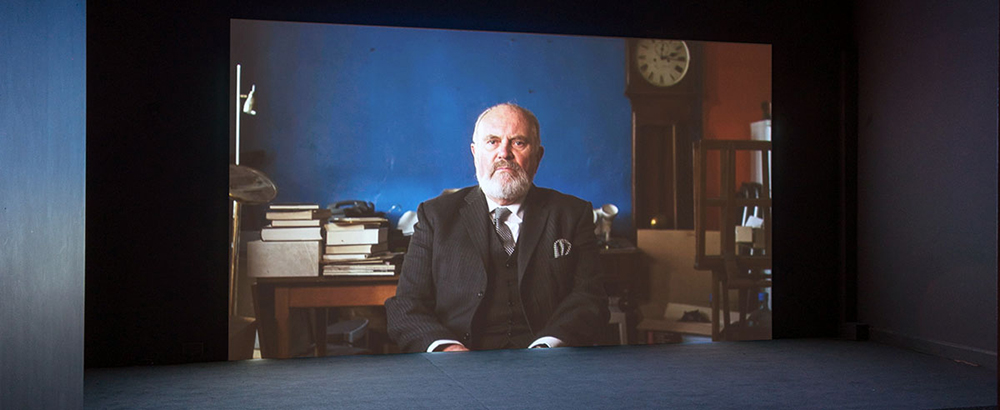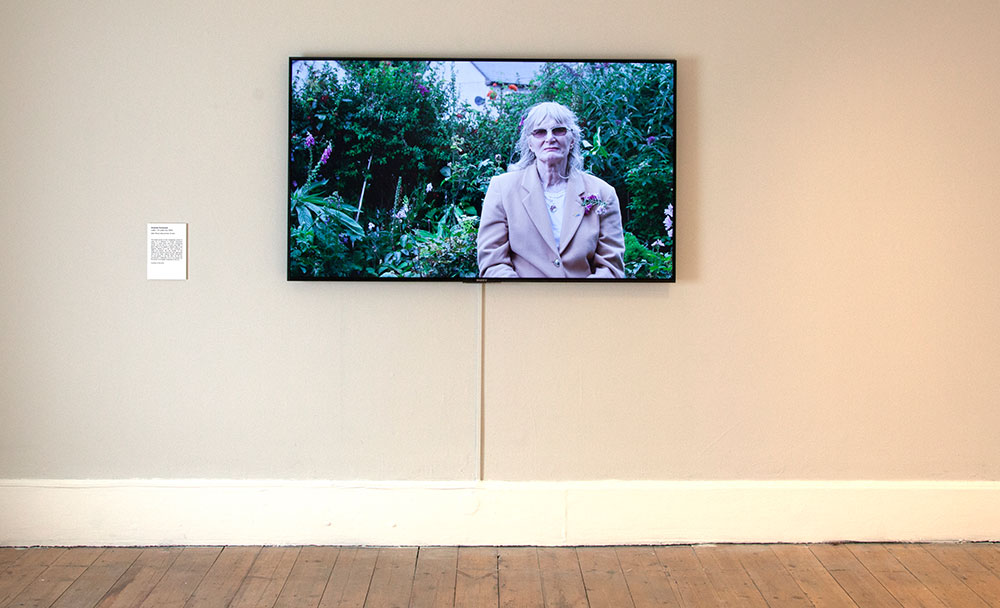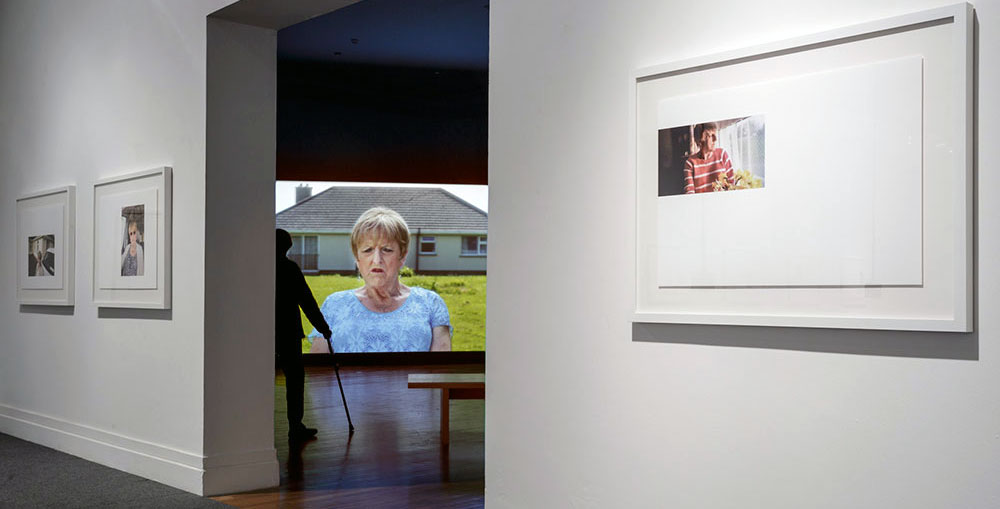
Amanda Dunsmore’s filmed portraits feature social actors who have transformed society. Filmed recently in Dublin Castle, Dr. Katherine Zappone's portrait completes a series which includes: Dr. Lydia Foy (2022) and former Senator David Norris (2012), charting Ireland’s legal and political progress towards societal equality.

‘Katherine’ – Katherine Zappone, silent filmed video portrait, 20 mins, 2024, (portrait has not been exhibited, filming location documentation).
Dr. Katherine Zappone was nominated to the 24th Seanad Éireann (Irish Senate) by Taoiseach Enda Kenny in 2011. She was elected to Dáil Éireann (Irish Parliament) in 2016 and appointed Minister for Children and Youth Affairs. She is a former Commissioner with the Irish Human Rights Commission (2002–2012) and a former CEO of the National Women's Council of Ireland.
Katherine Zappone and Ann Louise Gilligan met at Boston College in 1981. Returning to Ireland in 1983, due to the political and cultural time, their relationship was kept a secret. They were married in 2001 in British Columbia, Canada. Their legal case for Ireland’s marriage equality began the same year. In July 2003 the decision was taken to take a constitutional case and to break the public silence about partnership recognition between same-sex couples. In 2015 on May 23rd, in Dublin Castle, Ireland became the first country in the world to say "yes" to Marriage Equality by popular vote.
The Irish State, in its constitutional pledge to defend the equal rights of all its citizens, acknowledges that gay and lesbian couples deserve the protection, rights, responsibilities, and dignity that civil marriage affords to couples.

‘David’ – David Norris, silent filmed video portrait, 19 mins, 2012.
David Norris is a leading campaigner for gay rights, a humanist, a conservationist, and an academic. In 1973, he jointly established the Sexual Liberation Movement (SLM) which campaigned for law reform and held Ireland’s first gay disco in 21 Westland Row, coincidentally the birthplace of Oscar Wilde. In 1977, David Norris and 9 other men took a legal case in the Irish Courts, which ended in the European Court of Human Rights in 1988. The Court found that Ireland’s criminalisation of homosexual acts was in breach of the European Convention on Human Rights. The finding marked a turning point in the campaign for equality. In 1993, homosexuality was decriminalised in Ireland.
David Norris was elected by the University of Dublin electorate as part of the 18th Seanad in 1987 and was the longest-serving member of Seanad Éireann (Irish Senate), retiring in 2024. He is a renowned Joycean scholar and known as an animated and brilliant raconteur. Filmed in the attic of the James Joyce Centre, Dublin, in this artwork David Norris sits surrounded by books and the remnants of Joyce-related activities. David Norris's portrait was filmed as part of a 2012 older LGBTQ+ generation year-long art project and commission. David Norris Portrait, 19mins, 2012. Edition of 3 + AP. Edition 1, Galway County Council Collection. Edition 2, Ireland's National Collection, Crawford Gallery, Cork.

‘Lydia’ – Dr Lydia Foy, Irish Transgender activist, silent filmed video portrait, 18 mins, 2022.
Until very recently, Ireland had no provision for legal recognition of transgender persons in their true gender. This was changed as a result of landmark legal proceedings taken by Dr. Lydia Foy, which resulted in the passing of Ireland’s first ever, Gender Recognition legislation in July 2015. Lydia Foy has lived as a woman since 1991. In March 1993, Lydia Foy applied to Ireland's office of the Registrar General for a new birth certificate to reflect her gender. She was refused. Lydia Foy undertook an arduous twenty-two year legal battle with the Irish State, which ultimately resulted in the first judgment of incompatibility with the European Convention on Human Rights.
Ireland's Gender Recognition Act was passed on July 15th, 2015. The Act was commenced in September and Dr Lydia Foy became the first person to be legally recognised by this Act. Ireland now has one of the most progressive and inclusive transgender recognition laws in the world.
Lydia is also in the Guinness Book of World Records for growing the largest foxglove in the world. In 1997, she grew a foxglove (Digitalis purpurea) measuring a total height of 3.29 m (10 ft 10 in) in her garden at Athy, County Kildare, Ireland. In 2022, Amanda Dunsmore filmed Lydia’s portrait in her garden.

Becoming Christine
An exhibition made in partnership with Christine Beynon. 'Becoming Christine' is a extensive body of work based on the lived experience of UK/Irish Transgender activist Christine Beynon, comprising re-presented "selfies", a sound installation and a silent video portraiture. The "selfies" follow Christine's journey and transition over 12 years. These self-portraits range in tone from the painful, to the playful, from the mundane to the contemplative to the joyful. The immersive sound installation is a narrated artwork, which was a result of the collaborative partnership between the artist and Christine Beynon.
Becoming Christine project website: becoming-christine.com